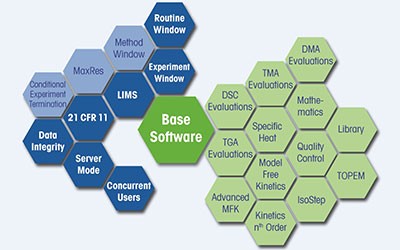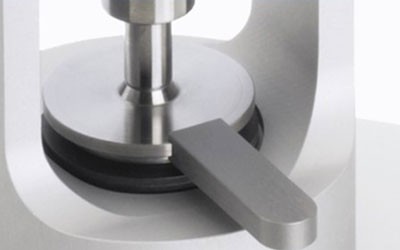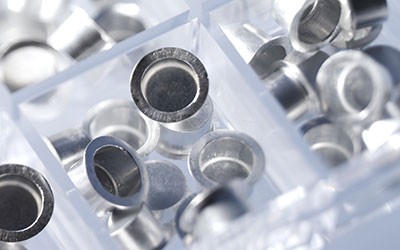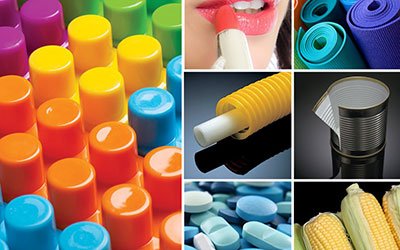
Thermal Analysis Instrumentation
Innovative Technology for Maximum Performance
Thermal Analysis comprises a group of techniques that measure physical or chemical properties of a sample as a function of temperature or time. It provides laboratories with valuable results and new information in quality assurance and control, process and product development, and research. METTLER TOLEDO thermal analysis Excellence instruments allow you to characterize sample materials over a very wide temperature range.
Advantages
Modular Design
Modularity is at the core of METTLER TOLEDO thermal analyzers enabling us to offer tailor-made solutions for almost all academic and industrial applications. Should requirements change after installation, the instrument can be upgraded as needed.
Reliable Automation
Our TGA and DSC systems support fully automated workflows – from sample loading to result analysis and report generation. Up to 34 samples can be processed by our robust, factory endurance-tested sample robot.
One Software for All Thermal Analysis Instruments
STARe is the most complete and comprehensive thermal analysis software, providing unrivalled flexibility, unlimited evaluation possibilities and the technical controls to support compliance.
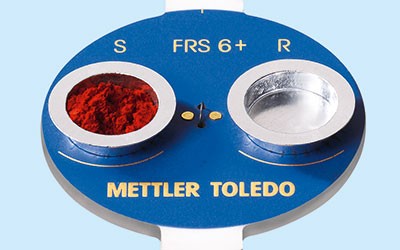
Innovative Sensor Technology
Put your trust in METTLER TOLEDO’s world-leading sensor technology: Whether you purchase a DSC, TGA, TMA or DMA instrument, we guarantee exceptional sensitivity and highly accurate measurement results.
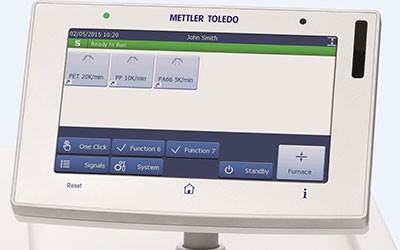
Simple Operation
STARe functionality is readily accessible from the software's intuitive ribbon interface. Standard features such as OneClick™ and multiple curve handling, as well as options like Quality Control and Reference Library, simplify daily lab work.
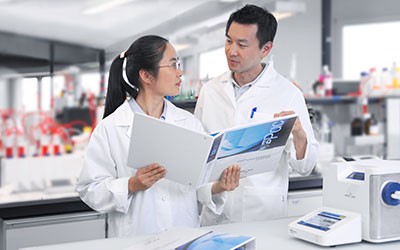
High-Level Competence & Support
Our global network of application specialists gives you access to the latest application know-how. Dedicated application specialists help to ensure that you obtain the most accurate thermal analysis results.
Explore Our Services - Tailored to Fit Your Equipment
According to the International Confederation for Thermal Analysis and Calorimetry (ICTAC), thermal analysis is group of techniques in which a physical property of a substance is measured as a function of temperature while the substance is subjected to a controlled temperature program.
Support & Repair

Training & Consulting

FAQs
What is Differential Scanning Calorimetry?
Differential scanning calorimetry (DSC) is the most frequently used thermal analysis technique. DSC measures enthalpy changes in samples due to changes in their physical and chemical properties as a function of temperature or time. Our DSC instrument is an ideal thermal analyzer to characterize thermal effects such as glass transition (Tg), melting behavior, crystallization, curing behavior, polymorphism, reaction kinetics, thermal history, stability, evaporation, or specific heat capacity.
What is Thermogravimetric Analysis?
Thermogravimetry (TGA) is a technique that measures the change in weight of a sample as it is heated, cooled or held at constant temperature. Its main use is to characterize materials with regard to their composition. Our TGA instrument is extremely useful in determining thermal stability, decomposition kinetics, quantitative content analysis, adsorption/desorption, determination of Curie points, and evaporation. Attaching an evolved gas analysis (EGA) technique, helps the identification of decomposition products, solvents and solvates.
What is Thermomechanical Analysis?
Thermomechanical analysis (TMA) is used to measure dimensional changes of a material as a function of temperature. Thermal expansion and effects such as softening, crystallization and solid-solid transitions determine the potential applications of a material and provide important information about its composition.
What is Dynamic Mechanical Analysis?
Dynamic mechanical analysis (DMA) is used to measure the mechanical and viscoelastic properties of a material as a function of temperature, time and frequency while it is subjected to an oscillating stress. Depending on the measurement mode and the sample geometry, DMA determines either the shear modulus (G), or the Young’s modulus (E). A DMA instrument can determine the viscoelastic behavior, glass transition, damping behavior, phase transitions, relaxation behavior, gelation, mechanical modulus, and softening of materials.
What is Thermo-Optical Analysis?
Thermo-optical analysis (TOA) is a powerful method which is widely used to visually examine all kinds of thermal transitions. TOA can either be a microscope attached to a DSC instrument, or a Hot Stage microscopy system.
How are thermal analysis techniques complementary?
Each thermal analyzer can tell you a great deal about a material’s properties, but sometimes the results and evaluation can be ambiguous from one technique. This is when having more than one thermal analyzer can help develop a full picture of a material’s properties. For example, combining the mass loss data from a TGA instrument with the heat flow information from a DSC instrument could help to better identify a thermal effect than using a standalone system. All of METTLER TOLEDO's thermal analysis systems are connected to the power STARe software, so the analysis from different techniques can be easily combined and compared.
